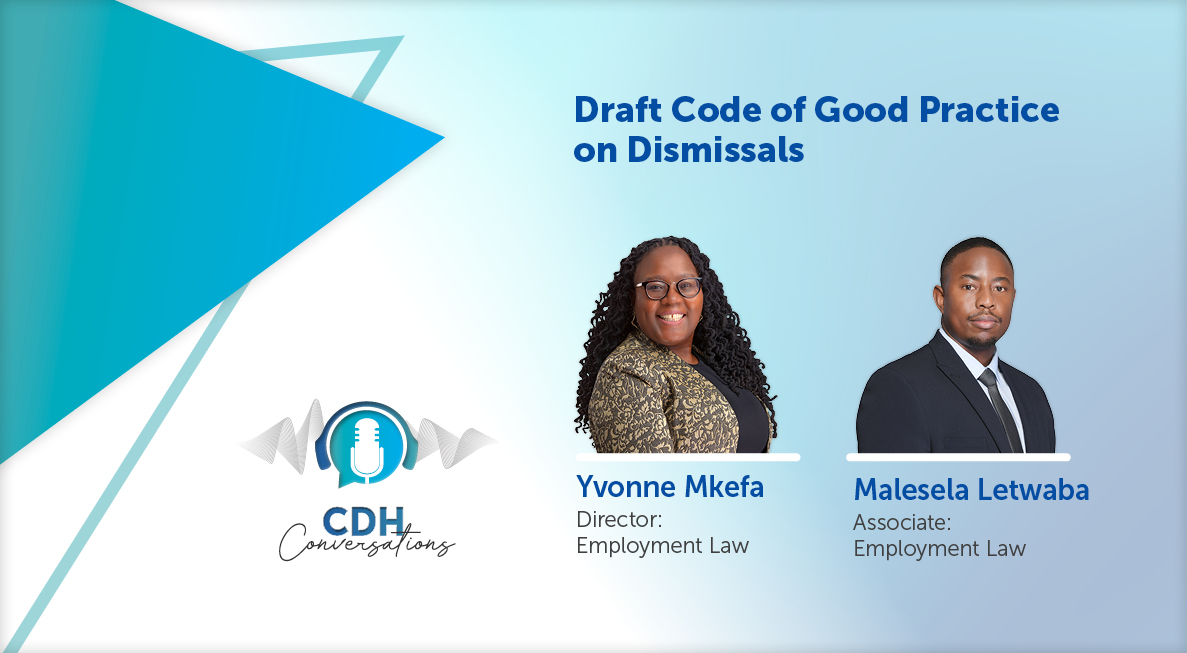A burning issue: National Treasury releases the revised Draft Regulations on the Carbon Offset
The Media Statement explains that the Draft Regulations were being published for a second round of public comment and further consultation, following the publication of the previous version of the Draft Regulations during June 2016 (Initial Regulations). We discussed the Initial Regulations in our Tax & Exchange Control Alert of 22 July 2016. Prior to the release of the Draft Regulations, National Treasury also released an amended version of the Draft Carbon Tax Bill (Draft Bill) during December 2017.
In terms of the Draft Bill, taxpayers will be able to claim a carbon offset allowance of 5% or 10%. We discussed the Draft Bill and the history of carbon tax in South Africa in our Tax & Exchange Control Alert of 2 February 2018 and our 2018 Special Edition Alert on the Budget Speech.
According to the Media Statement, 66 written submissions were received on the Initial Regulations and the main comments received on the Initial Regulations focused on:
- the design of the carbon offset including the role of the carbon offset in facilitating the transition to a low carbon economy;
- the scope of the offsets and the suitability of a cap on the allowance; and
- the technical, legal and administrative aspects of the Initial Regulations.
In this article, we will compare the Initial Regulations to the Draft Regulations and briefly discuss some of the changes that have been made.
Eligibility – how can one make use of the carbon offset allowance?
Similar to the Initial Regulations, Regulation 2 of the Draft Regulations states that carbon offsets can only be generated through the furtherance of an approved project. The definition of an “approved project” has remained the same, namely, CDM projects, VCS projects, Gold Standard projects or projects that comply with another standard approved by the Minister of Energy or delegated authority. One should note that the VCS is now known as VERRA.
One of the differences between the eligibility provision in the Draft Regulations and the Initial Regulations, is that the approved project must now be carried on, on or after 1 June 2019, which is when the carbon tax will come into effect, as opposed to the previous date of 1 January 2017.
Regarding the registration of projects registered prior to the implementation of the carbon tax, the Explanatory Note explains that under the Draft Regulations, these projects will have to meet the following requirements to be eligible for the carbon offset allowance:
- In the case of projects that are already registered, offset credits issued prior to the implementation date of the carbon tax which have not yet been retired will be eligible, provided they are transferred from an international registry to the South African registry within the first phase of the carbon tax; and
- In the case of projects that are currently under development and which will be registered before the start date of the carbon tax, credits issued following the introduction of the carbon tax will have to be transferred from an international registry to the South African registry and used within one year after the end of the first phase of the carbon tax.
The Explanatory Note lists the following activities as being eligible as carbon offsets:
- small and medium-scale renewable energy projects with a generating capacity of up to 50MW;
- projects receiving benefits through the renewable energy independent power producers procurement programme (REIPPPP) with project bids signed after 9 May 2013;
- energy efficiency projects on project activities outside the carbon tax net not claiming the s12L energy efficiency savings tax incentive eg energy efficiency in buildings; energy efficiency in the residential and commercial sector, electricity transmission and distribution efficiency;
- transport eg transport energy efficiency, public transport;
- waste eg municipal waste projects; and
- agriculture, forestry and other land use (AFOLU) eg restoration of sub-tropical thicket, forests and woodlands, restoration and management of grassland, small scale afforestation, wetland drainage and rewetting, anaerobic biogas digesters, and reduced tillage.
According to the Explanatory Note, these listed activities are only indicative and new project types could be included should they meet the required criteria.
In terms of Regulation 4 of the Draft Regulations, the list of activities for which one may not receive the carbon offset allowance, has been expanded, compared to the Initial Regulations. The additional activities include the following:
- the generation of renewable energy in respect of a technology with a generation capacity exceeding 50 MW;
- nuclear energy; and
- geological carbon dioxide capture and sequestration.
Offset utilisation period – for how long may a carbon offset be used?
According to Regulation 3 of the Draft Regulations, the periods for which carbon offsets may be used, have remained the same.
An offset generated by a CDM project may be used for a non-renewable 10-year period or for a 7-year period which is twice renewable, constituting a period of 21 years in total. The same crediting periods apply to any GS project. In the case of a VCS project, all non-AFOLU projects will have a 10-year crediting period which may be renewed twice and all other AFOLU projects may be credited for a minimum period of 20 years and a maximum period of 100 years which may be renewed four times. Any project approved under another standard will have a crediting period specified by the Minister of Energy or a delegated authority.
According to the Explanatory Note, the periods mentioned above, for which an offset may be used do not change once credits are transferred to the South African registry. One change that has been made is where the Initial Regulations stated that despite the abovementioned periods, the duration of an offset may be extended by application to the Minster of Energy or delegated authority. This provision does not appear in the Draft Regulations.
Procedure to claim the carbon offset allowance
Regulation 7 of the Initial Regulations merely stated that a taxpayer must register a carbon offset with the administrator in the form and manner and at the place that the administrator may determine.
However, Regulation 8 of the Draft Regulations is far more comprehensive and states the following things that must be done to claim the carbon offset allowance:
(a) register with the administrator in the time, in the form and in the manner as the administrator may prescribe;
(b) submit to the administrator those documents, in the time, in the form and in the manner, as the administrator may prescribe, enabling the administrator to issue an extended letter of approval;
(c) obtain an extended letter of approval from the administrator;
(d) submit to the administrator an attestation of cancellation;
(e) obtain from the administrator a certificate containing the content as contemplated in regulation 11; and
(f) claim the allowance against tax liability.
The “administrator” referred to in Regulation 8, is defined in Regulation 1 read with Regulation 5 of the Draft Regulations. Regulation 5 states that it will be the Director-General of the Department of Energy; or an official employed in the Clean Energy programme of the Department of Energy to whom the Director General may delegate exercise of power and discharging of responsibilities conferred by the Draft Regulations (once they are final). This person must act as administrator for the purpose of the regulations.
The “extended letter of approval” that will be issued by the administrator, is defined in Regulation 1 as a letter issued by the administrator confirming that a project qualifies in respect of creating an offset.
The “attestation of cancellation” referred to in Regulation 8(d) is not defined although the phrase “attestation of voluntary cancellation” is defined. The phrase “attestation of voluntary cancellation” is defined in Regulation 1 as a document issued by the CDM, VCS or Gold Standard certifying that a carbon credit has been cancelled for the purpose of being used in the South African carbon tax offset scheme. It may be that “attestation of cancellation” in Regulation 8 refers to an “attestation of voluntary cancellation” referred to in Regulation 1 of the Draft Regulations.
The certificate referred to in Regulation 8(e) must contain seven things listed in Regulation 11, including, among other things, the:
- geographical location of the activity undertaken in respect of which the offset is created; and
- methodological basis in respect of which the approved project is developed as contemplated in the definition of “approved project” in Regulation 1.
Due date for comments
According to the Media Statement, parties who wish to submit written comments on the Draft Regulations, must submit such comments to NT by close of business on 14 December 2018.
The information and material published on this website is provided for general purposes only and does not constitute legal advice. We make every effort to ensure that the content is updated regularly and to offer the most current and accurate information. Please consult one of our lawyers on any specific legal problem or matter. We accept no responsibility for any loss or damage, whether direct or consequential, which may arise from reliance on the information contained in these pages. Please refer to our full terms and conditions. Copyright © 2025 Cliffe Dekker Hofmeyr. All rights reserved. For permission to reproduce an article or publication, please contact us cliffedekkerhofmeyr@cdhlegal.com.
Subscribe
We support our clients’ strategic and operational needs by offering innovative, integrated and high quality thought leadership. To stay up to date on the latest legal developments that may potentially impact your business, subscribe to our alerts, seminar and webinar invitations.
Subscribe




